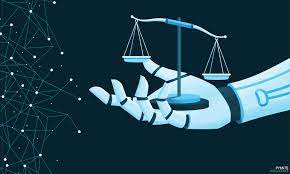Introduction
Recovering from an injury is not easy, especially if you have to stress about your finances or you’re worried about needing to come back to work. Did you know that 340 million occupational accidents happen each year worldwide? You’re not alone in fighting for your rights.
In this article, we will guide you on how to effectively use both workers’ compensation and FMLA (Family and Medical Leave Act) after experiencing an injury. When you find yourself in a situation where you need time off work due to a work-related injury, you need to know how you can take advantage of both Workers’ Compensation and FMLA.
But what happens when you find your FMLA completely exhausted while you are receiving workers’ comp? Let’s discuss how you can handle this situation so you can recover from your injury faster and with less stress:
How Workers’ Comp and FMLA Work Together
Workers’ compensation provides financial assistance and medical coverage for individuals dealing with work-related injuries or illnesses. It steps in to cover lost wages and medical expenses, allowing you to focus on recuperation without financial worries.
In tandem, the Family and Medical Leave Act, acts as a protector of your job and employment benefits. It grants eligible employees unpaid leave for a variety of family and medical reasons, including your own serious health condition.
Both workers’ comp and FMLA allow you to smoother transition from injury to recovery and back to the workplace.
Key Differences Between Workers’ Comp and FMLA
Though these two programs may share some similarities, it’s crucial to comprehend the key distinctions between them:
Workers’ Compensation:
- Focuses on financial assistance and medical benefits for employees dealing with work-related injuries or illnesses.
- Compensates for lost wages, medical expenses, and rehabilitation costs, ensuring that you can focus on your recovery without worrying about financial burdens.
- Administered by State Agencies.
FMLA (Family and Medical Leave Act):
- Grants eligible employees unpaid leave for specific family or medical reasons, ensuring that your job is protected while you attend to your health.
- Allows for up to 12 weeks of unpaid leave for qualifying reasons, including your own serious health condition.
- Regulated by the federal government.
It’s important to recognize these disparities to ensure you navigate both systems effectively and maximize the benefits available to you.
Step-by-Step Guide to Applying for Workers’ Compensation and FMLA
To successfully access the benefits provided by both workers’ Compensation and FMLA, start by following these straightforward steps when applying:
- Report your injury or illness to your employer immediately, providing all the necessary details and documentation to support your claim.
- Consult with your healthcare provider for a comprehensive medical evaluation and obtain any required medical certifications. Timely submission of these documents to your employer and the relevant agencies is crucial.
- Familiarize yourself with your company’s policies and procedures regarding workers’ Compensation and FMLA. Maintain open lines of communication with your employer, staying updated on any changes or requirements.
- Keep accurate records of all interactions, forms, and medical appointments. This ensures a smooth navigation of the application process, increasing your chances of receiving the benefits you deserve.
By following these steps, you can navigate the application process smoothly and increase your chances of receiving the benefits you deserve.
Managing Time Off and Returning to Work with Workers’ Compensation and FMLA
When managing your time off and returning to work prioritize your physical and mental well-being while keeping open lines of communication with your employer. Take the time you need to recover fully before attempting to return to work, following your doctor’s orders and attending all necessary medical appointments.
Maintain open communication with your employer about your progress and any accommodations you may need upon your return. Stay in touch with your coworkers and supervisors to stay informed about any changes in work responsibilities or company policies.
Remember to pace yourself when you do return, gradually increasing your workload as you regain strength and confidence.
Tips for Maximizing Benefits and Protections with Workers’ Compensation and FMLA
To make the most of your benefits, consider these practical tips:
- Report your injury promptly and file your workers’ Compensation claim as soon as possible to receive your entitled benefits in a timely manner.
- Maintain open communication with your employer and healthcare provider throughout the process, keeping you informed about changes or updates to your benefits.
- Be proactive in seeking necessary medical treatment and rehabilitation services, aiding not only in your recovery but also demonstrating your commitment to getting back to work.
- Familiarize yourself with the specific rules and regulations of both workers’ Compensation and FMLA to ensure a comprehensive understanding of your rights and protections.
Conclusion
Utilizing both workers’ compensation and FMLA after an injury can provide valuable benefits and protections for employees. By understanding the key differences between these two programs and following a step-by-step guide for applying, individuals can undergo the process faster and more efficiently.




Leave feedback about this